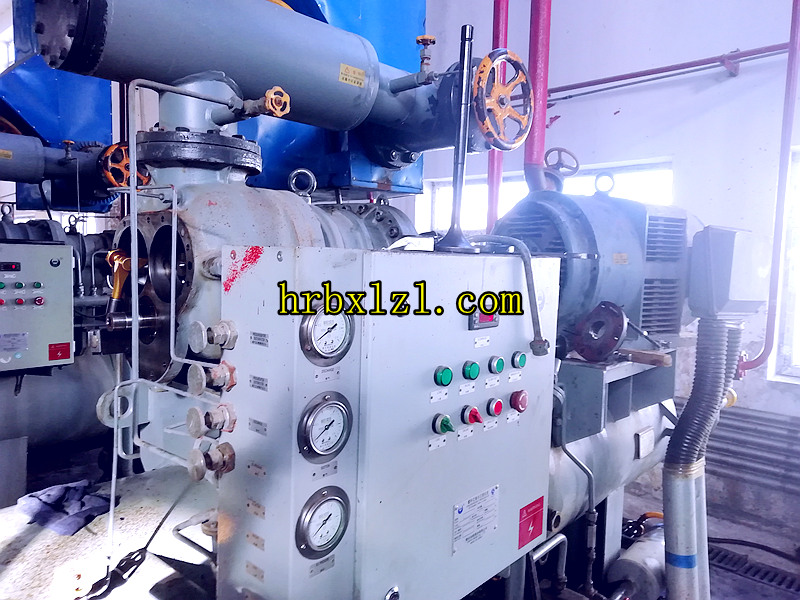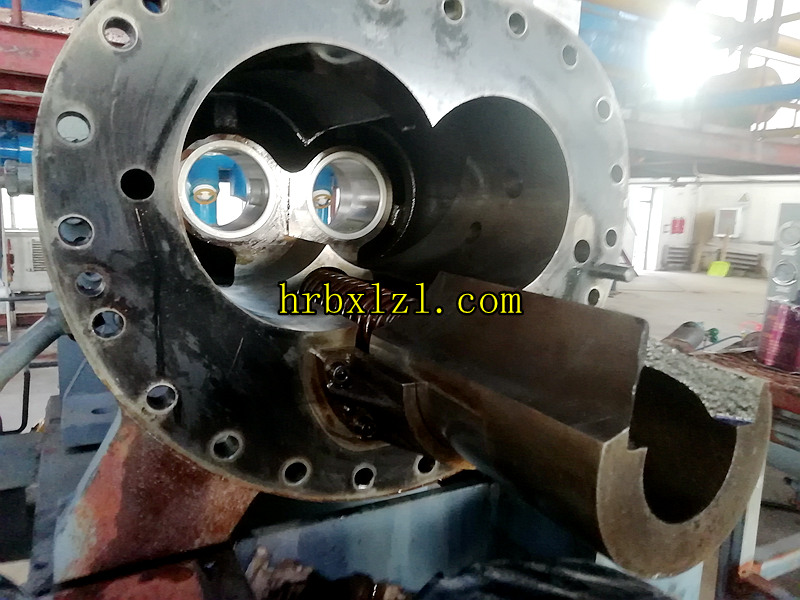There are two types of system failures that often occur during the operation of the refrigeration system:
(1) Failure of refrigeration running host (compressor, pump, etc.)
(2) Refrigeration system (auxiliary equipment and control valve) failure
Next, we will make a comprehensive analysis of the failures and handling methods encountered in many years of practical work for reference. We welcome criticism and correction of any improper points.
Class I: Refrigeration operation host failure
1.1 Failure of refrigeration compressor (piston type, screw type)
There are many kinds of compressor failures, mainly including the following:
The oil pressure is too low. At this time, first check the oil level in the crankcase or oil separator, adjust the oil pressure regulating valve and check the oil pump. All the above are normal, and the oil system may be abnormal. Check whether the filter screen, crankshaft and other components are excessively worn.
The oil pressure is too high. At this time, it is mostly caused by improper adjustment of the oil pressure regulating valve.
The compressor operates abnormally. First, check whether the suction and exhaust pressure deviates from the normal working condition (excessive vacuum or high system evaporation pressure is easy to damp the car), the running parts are damaged: the crankshaft connecting rod clearance is too large, the exhaust valve plate (group) is damaged, the high and low pressure isolation seals are damaged, the intercooler is faulty, the pressure change, loading and unloading devices are abnormal, the suction and exhaust valves are faulty or the opening and closing positions are improper, the dragging motor is faulty or worn due to lack of oil, the coupling is faulty, and the anchor bolts are loose, The system support is desoldered.
The press leaks externally. It is usually caused by leakage of shaft seal, uneven fastening of all connecting gaskets, and sudden damage to the engine body.

1.2 Other operating equipment.
(1) Water pump and cooling tower condenser
The water seal of the water pump is worn and damaged due to mechanical failure, and the motor of the cooling tower and condenser is overloaded or damaged due to other reasons, mainly because it cannot be started, and the running noise is too loud. The intuitive response is that the system shows an abnormal rise in high pressure, and the electric control part alarms.
The reduction of heat exchange efficiency is usually caused by scaling on the surface of the heat exchange tube, which reduces the condensation capacity and requires regular maintenance.
Check and repair the leakage of heat exchange tube
The ammonia pump system often fails to feed liquid or suffers from mechanical failure. Please refer to the failure phenomenon and maintenance.

Class II: refrigeration system failure
For a refrigeration system that has been put into normal operation (has been debugged and operated well), the main fault is insufficient refrigeration capacity, which cannot meet the design and production requirements.
It is often manifested as:
A: High condensation pressure
When the evaporation pressure of the system is within the normal range and the condensation pressure is too high, the cooling capacity of the system surface line is insufficient:
1. If the cooling water is insufficient or the speed of the air cooling fan decreases, the treatment method is to check the filter section of the water system, the fan motor and the control circuit.
2. The system is excluded from mixing non condensable gas (air or gas generated by medium deterioration). The non condensable gas occupies the condensing space and does not change the gas-liquid state. It is often shown by the pulsation of the pressure gauge. When the refrigerator stops running, the normal pressure of the condensing system is higher than the medium pressure corresponding to the external temperature.
3. Too much refrigerant oil discharged from the system is stored in the high-pressure section, which will also cause too high pressure.
Too much refrigerant in an evaporation section will also cause the system pressure to be too high.
The increase of fouling on the surface of heat exchange tubes in heat exchange systems is also the cause of high system pressure.
Whether the check valve and exhaust valve in the branch of the exhaust pipeline are closed accidentally due to valve core falling off.
B: Low evaporation pressure
This is a common failure of the refrigeration system, which is mainly caused by insufficient refrigeration medium or insufficient supply or reduced evaporative heat transfer efficiency.
Insufficient cooling medium
The reason is that there is leakage in the refrigeration system or the total amount of refrigeration working medium in the system decreases due to long-term air release and other operations, resulting in a decrease in the total amount of ammonia liquid or Freon liquid. If the corresponding high pressure storage liquid level drops and it is unable to supply liquid normally, the refrigeration working medium should be supplemented and the source of leakage should be found, except for normal consumption.
Insufficient supply
It is usually caused by the failure of throttling expansion system (premise of normal compressor system)
2.1 For the ammonia system: the filter screen in front of the solenoid valve of the main liquid supply branch is blocked, the solenoid valve coil is burned, the opening of the branch stop valve and throttle valve is small or the valve core falls off, the gas resistance or pipeline of the evaporation system is blocked (dirty or oil blocked), the liquid supply system of the ammonia pump is damaged or poor, and the low evaporation pressure causes the ammonia pump to not feed liquid or the low pressure liquid storage level. The liquid level of gravity liquid supply system is low or no, and the system is air blocked. Check and eliminate according to the above possibilities.
2.2 For fluorine system: after checking the filter and solenoid valve, basically lock the expansion valve, and open the expansion valve, the following conditions will occur:
If the evaporation pressure rises and the compressor frosts excessively, it should be caused by the reduction of the evaporation area of the air cooler or evaporation pipe (evaporator). Restore the original opening of the expansion valve. Defrost the air cooler and drain the oil or defrost the evaporator or evaporation pipe. Change the temperature control defrosting operation cycle and check the oil separator for treatment.
The evaporation pressure basically remains unchanged, the expansion valve is damaged, the refrigerant is lacking, and the filter screen is blocked.
The evaporation load is small or the evaporation pipe is blocked.
C. The high and low evaporation pressure is mostly caused by the system oil resistance or ice resistance. At this time, it is better to remove the water in the system and replace the dry filter until it is normal. For the oil resistance, the excess oil in the evaporator should be removed in time and the oil separator should be solved or the design of the evaporation pipeline should be changed.